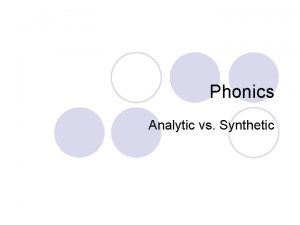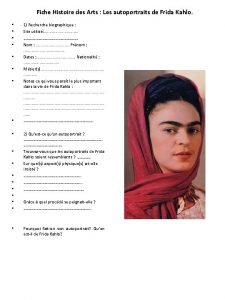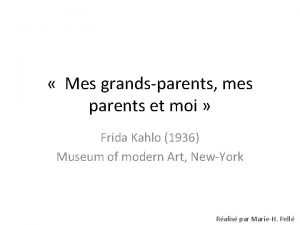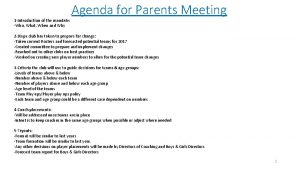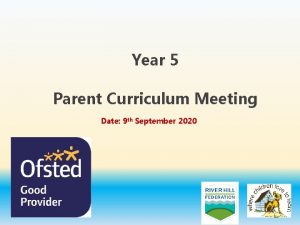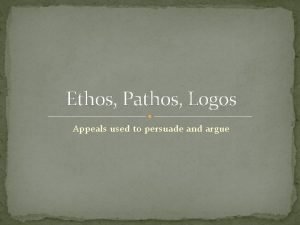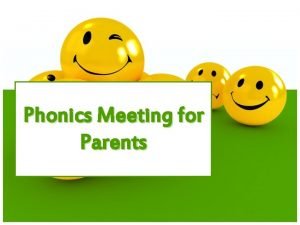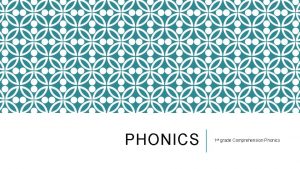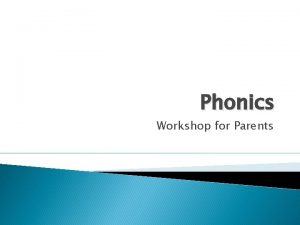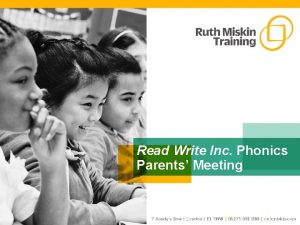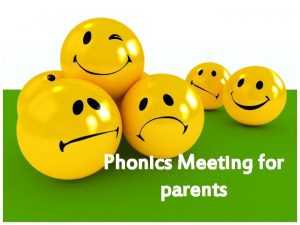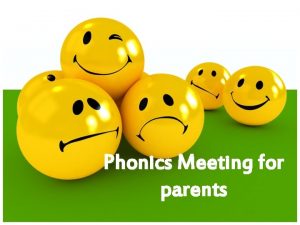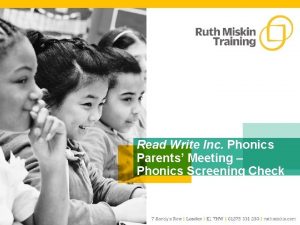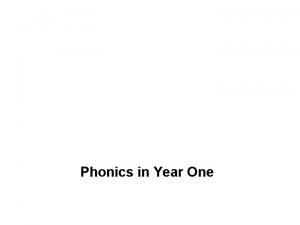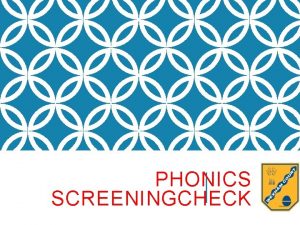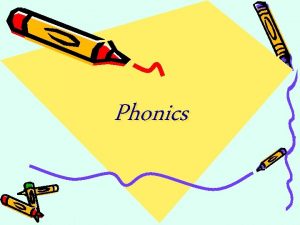Phonics Meeting for Parents How is phonics taught














- Slides: 14

Phonics Meeting for Parents

How is phonics taught at Crest? • Children in Foundation stage, Year 1 and Year 2 are arranged in ability groups for phonics to ensure that they receive precision teaching. • The activities are led by the adults familiar to the children and are taught for about 20 minutes each morning. • We use a variety of resources that link to the letters and sounds strategy. • Children learn the initial sounds and then use these to build simple words. • Children then move on to more complex sounds.

Key phrases Phoneme – this is the sound that the letters make; a ai igh In the English language we have around 44 phonemes Grapheme – this is the letter shapes that represent the sounds In the English language we have around 150 graphemes Blend – How we put the sounds together for reading. Segment – How we separate the sounds for spelling.

Blending words Children learn to read by blending sounds together When they see a set of sounds they begin by saying each phoneme and then put them together. c-a-t m-oo-n Blending is needed for reading p-ai-n-t

Blending and Segmenting play mayk trayn cafay strayt wayt brayk green dreem kee happee light kight fligh Igh igh tigh blow smowk flowt gow mowst moon broot bloo groo We can read these words but they have been written using alternative graphemes.

Segmenting words Children need to learn to spell too! The difference is that children must convert the words into sounds They must identify each sound and then think of the graphemes that would represent them.

Tricky Words Some words can’t be sounded out and they must just be learnt by heart. These we teach as tricky words: E. G. they some one was

Year 1 Assessment • Every Year 1 child in the country will be taking a statutory phonics screening check in the same week. This year it begins on 17 th June. • The check is very similar to tasks the children already complete during phonics lessons. • The focus of the check is to provide evidence of children’s segmenting and blending skills, not to test their vocabulary.

Year 1 Assessment

Year 1 Assessment – How will it be carried out? • Teachers will conduct all of the screening checks with the children in a relaxed and friendly way. • The children will complete the check one to one in a quiet area of the school. • We are not permitted to indicate to the children at the time whether they have correctly sounded out and / or blended the word.

Year 1 Assessment – The results…. • The children will be scored against a national standard (threshold yet to be determined by Df. E) • We will inform you of whether they fall below or within this standard with their end of year report. • If your child’s score falls below the national standard they will re-take the phonics screening check in year 2.

How can you help? • Encourage them to use their sounds and actions to find the sound they need. • Children can practise their phonics by playing games. • Spotting phonemes in the books they choose to read. • By having fun with fun Talk at home! “What a tidy r-oo-m!” “Where’s your c-oa-t? ” “Time for b-e-d!” To help you need to know: • how to use pure sounds – video on Youtube • what the graphemes are • understanding how phonics helps with reading and spelling.

Reading and comprehending By talking to your child as much as possible and ‘feeding’ them new and different words: “Let’s eat our lunch now. ” munch our lunch now. ” gobble our lunch now. ” devour lunch now!” • Our aim is to support children by placing words in to a context and providing them with a rich vocabulary. • By asking questions about the stories they read, we can help children to understand the text.

Developing a love of reading • By reading your child lots of lovely stories and asking lots of questions! Use these prompts to help you: What do you think happens at the end? Explain how the character is feeling? What is happening? Why is the character saying that? What do you think that character will do next?
 Synthetic phonics vs analytic phonics
Synthetic phonics vs analytic phonics Frida kahlo famille arbre généalogique
Frida kahlo famille arbre généalogique Frida kahlo arbre généalogique
Frida kahlo arbre généalogique Parents parents
Parents parents Agenda for parents meeting
Agenda for parents meeting Barbara gustaffe
Barbara gustaffe Meeting objective
Meeting objective What is meeting and types of meeting
What is meeting and types of meeting Types of meeting
Types of meeting For today's meeting
For today's meeting Pkn sebagai tradisi dalam social studies
Pkn sebagai tradisi dalam social studies Why art cannot be taught
Why art cannot be taught World history chapter 6 review
World history chapter 6 review Ethos pathos logos assignment
Ethos pathos logos assignment Some things are caught not taught
Some things are caught not taught
